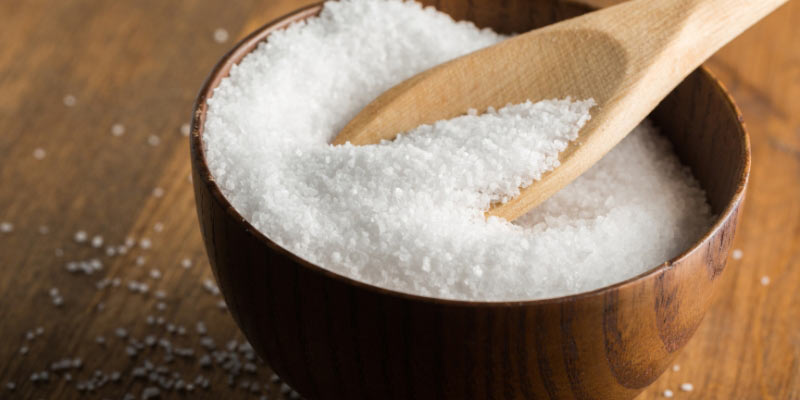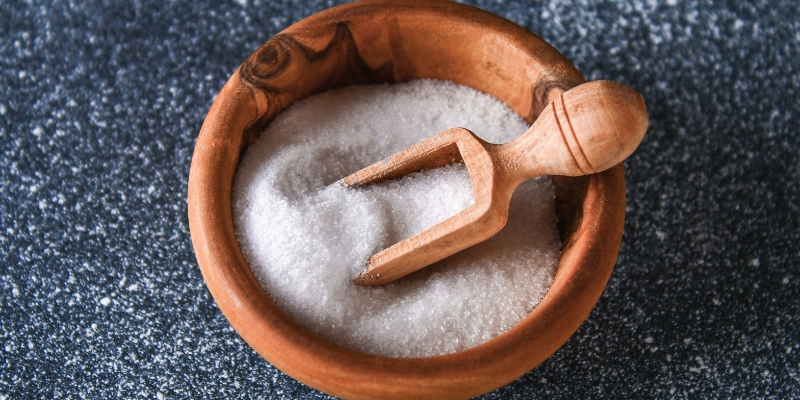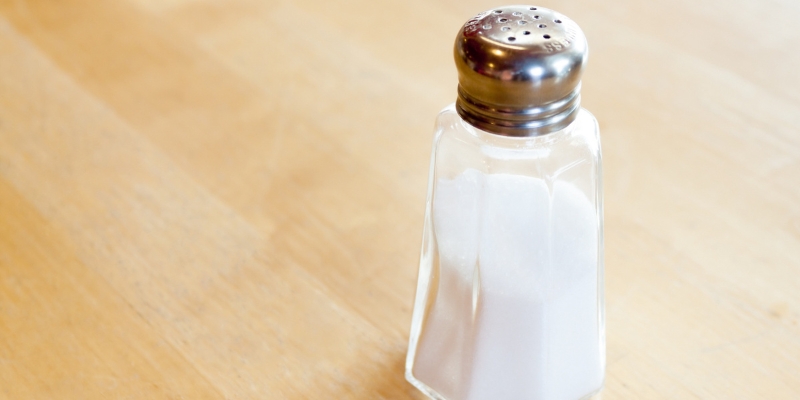
Our bodies need sodium to maintain fluid equilibrium and neuron and muscle function. When ingested in excess, salt may cause high blood pressure, heart disease, and stroke. Salt is a significant sodium supplier. This article will compare salts' sodium content to find the lowest. Understanding these options may help people eat better without sacrificing taste.
Sodium consumption guidelines vary by age and health condition, but fewer than 2,300 milligrams (mg) per day—about one teaspoon of table salt—is recommended. Exceeding this limit may harm health, so choose lower-sodium options.

Understanding Sodium in Salt:
Let's define salt and sodium before discussing low-sodium salts. The two elements in table salt are sodium and chloride. When ingested in excess, salt causes health problems. Salt accounts for 90% of our sodium consumption.
The recommended daily sodium consumption varies by age and health condition, but it's usually less than 2,300 milligrams (mg) or one teaspoon of table salt. Exceeding this limit may harm health, so choose lower-sodium options.
Types of Salts and Their Sodium Content:
Table Salt: The most common kitchen salt has 2,300 mg of sodium per teaspoon. It's the standard for salt variants. Its fine texture and homogeneity make it popular in cooking, although its high salt level demands moderation.
Sea salt, made by evaporating saltwater, is considered more natural. Although it has trace minerals that give it distinct tastes, it includes around 2,300 mg of sodium per teaspoon, like table salt. Sea salt's health advantages come from its absence of chemicals, not sodium.
Less dense than table salt, kosher salt takes up more space without increasing sodium. It has 1,800 mg of sodium per teaspoon, making it high-sodium. Its bigger, flakier grains make it great for salting meat before cooking but use it sparingly if you're watching your sodium consumption.
This famous salt is mined from the Himalayas and advertised as a healthier choice owing to its pink tint and mineral richness. However, it has 2,300 mg of sodium per teaspoon, like table salt. Although trace minerals provide visual appeal and subtle tastes, they're not a substantial source of decreased sodium.
"Low-sodium salt" refers to specialty salts with less sodium than table salt. These salts taste salty yet have 25-50% less sodium. Some manufacturers provide "no-sodium" salts using potassium chloride instead. These potassium-based alternatives taste salty without the health hazards of sodium, making them a good option for sodium-reduced diets.

Benefits of Using Low-Sodium Salts:
Sodium reduction improves blood pressure and heart disease risk. Low-sodium salts provide these advantages while boosting culinary taste.
Low-sodium salts may help manage hypertension. By replacing table salt with low-sodium alternatives, people may enjoy their favorite foods while improving their cardiovascular health.
Over time, low-sodium salts may retrain your taste receptors. Lowering your salt consumption may make you more sensitive to food's natural flavors, enabling you to enjoy more flavors in your meals. You may enjoy your food's complex tastes without salt, making dining more thoughtful.
Low-Sodium Salt Alternatives:
These potassium chloride salt replacements replace sodium chloride. They taste salty without boosting blood pressure. However, their unpleasant flavor may turn some individuals off. These potassium-based alternatives taste salty without the health hazards of sodium, making them a good option for sodium-reduced diets.
Dried herbs and spices make tasty salt replacements. Garlic, onion, basil, thyme, and oregano powders are famous. These herb mixes give rich, fragrant tastes and delightful saltiness without the health risks of high sodium. Try various herb combinations to tailor your seasoning to your tastes and recipes.
Lemon and lime zest add a zesty, citrusy flavor to foods, making them fresher and brighter without salt. Citrus zest adds flavor and natural acidity to salads, shellfish, and other foods. These low-sodium options reduce salt consumption and extend your culinary repertoire. Try these alternatives to explore new tastes and feel good about making healthier meals for your family.
Sodium Reduction Tips:
Read Food Labels: Food labels, particularly for packaged or processed goods. Search for "low-sodium" or "sodium-free." These labels might help you eat better and remain under salt restrictions.
Limit Processed Foods: Canned soups, freezer meals, and condiments are rich in salt. Eat fresh, whole foods whenever feasible. Cooking from scratch reduces salt and encourages a healthy diet.
Cook at Home: You may use less salt and low-sodium spices when cooking from home. Enjoy homemade meals where you may modify seasonings and improve your health.
Cooking with Low-Sodium Salts:
Adjustments are needed when cooking with low-sodium salts. Here are some tips:
Gradual Transition: Reduce salt gradually if you're accustomed to excessively salted foods. You'll learn to appreciate natural foods' tastes as your taste receptors change.
Add herbs, spices, garlic, onions, and citrus to your food as a substitute for salt. These flavor enhancers add depth and variety to your foods and give a gratifying sensory experience like salt.
Be open to experimenting. Explore low-sodium salts and alternatives to discover your favorite tastes. Taste is subjective; what suits one individual may not suit another. Discover the optimal mix between low sodium and delicious flavor by trying different alternatives.
Balancing Flavor and Health:
When reducing salt, taste, and health must be balanced. Health should be prioritized, but meals should be pleasant. Experimenting in the kitchen may provide tasty, healthy meals.
Individual taste preferences differ. Low-sodium salts and alternatives may taste better to some. Find what works for you while watching your salt consumption. Remember that thoughtful cooking and seasoning may lead to delicious discoveries and better health.
Conclusion:
In conclusion, knowing the sodium level of salts and trying low-sodium alternatives may help people cook healthily. Choose low-sodium salts and use inventive flavor-enhancing methods to have tasty, fulfilling meals while improving cardiovascular health. Lowering salt consumption may take some adjustment, but the long-term health advantages are worth it. Eat heart-healthy and enjoy its deliciousness by choosing salt judiciously.



